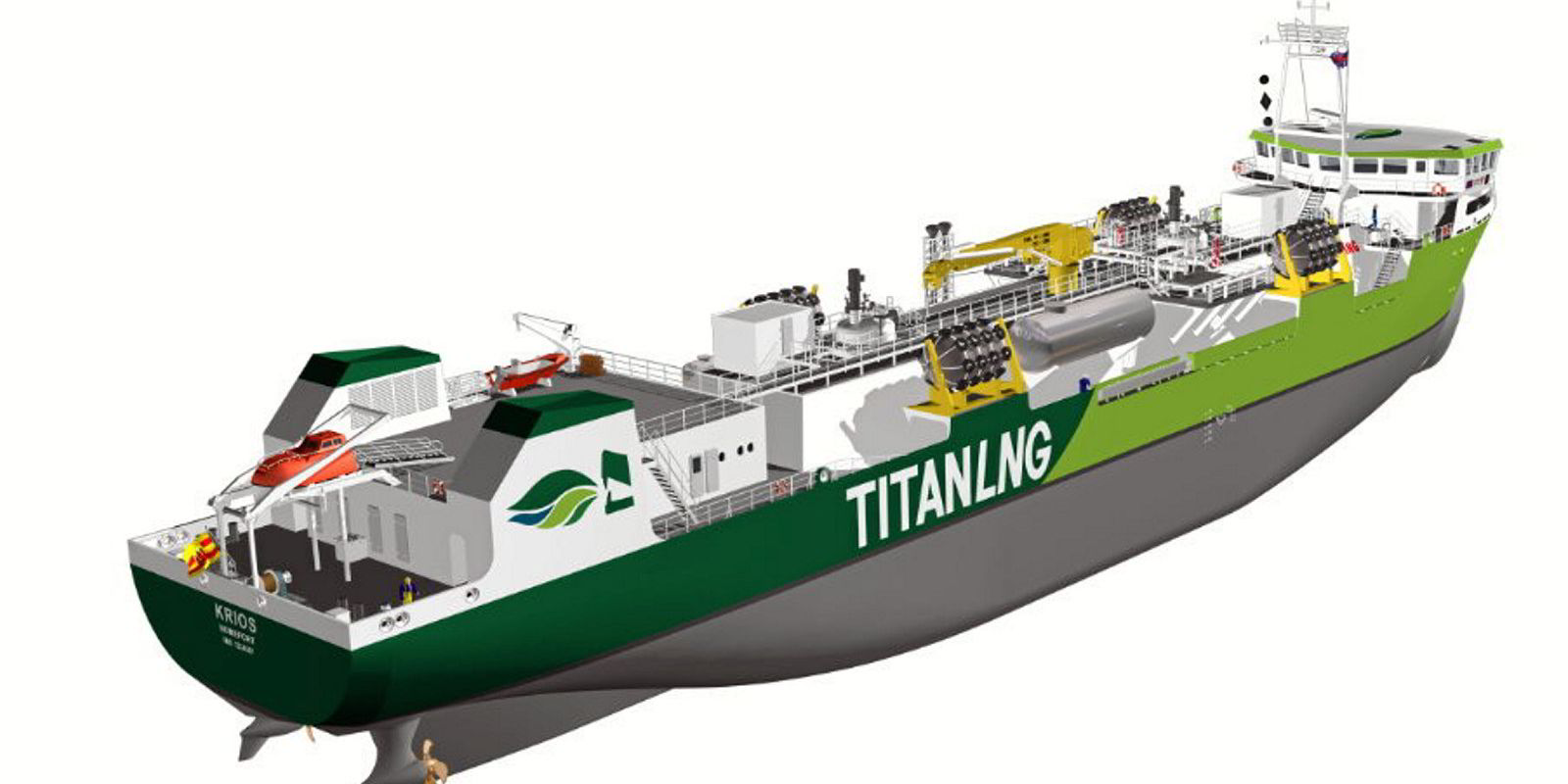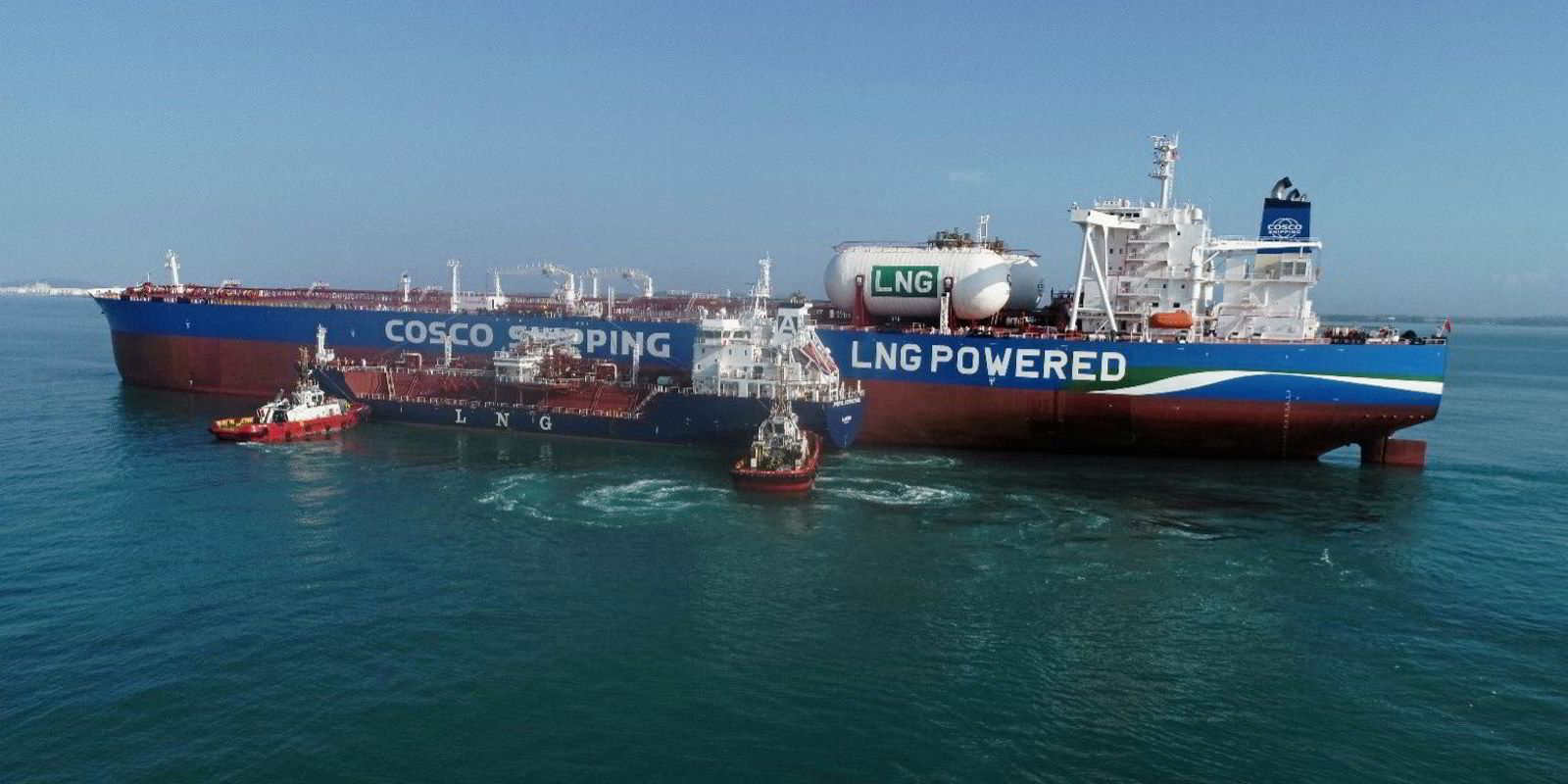Dutch fuel supplier Titan LNG has struck a long-term deal to supply LNG and bio-LNG for two hybrid ropax vessels that Brittany Ferries will put into operation between the UK and France from 2025.
Titan said it aims to supply fuel to both vessels during usual cargo operations alongside (SIMOPS) to avoid delays to sailing schedules.
The two 194.7-metre, 1,400-passenger LNG-hybrid newbuildings will join the fleet in 2024 and 2025 replacing two of the longest-serving vessels, Bretagne (1989) and Normandie (1992).
The ferries, which will have a large battery hybrid power system of 10 MWh for propulsion and manoeuvring in port and an 8 MW electric shore connection that will allow charging in port, will serve the routes connecting Portsmouth with Saint-Malo and Ouistreham.
Titan said the deal with Brittany Ferries marks the “significant expansion” of its operations in the English Channel, which will enhance the availability of LNG, LBM [liquefied bio-methane], and in the longer run hydrogen-derived LNG in the region.
Titan added that it has plans for one of its Krios-sized vessels to serve Brittany Ferries and transit between relevant ports.
In 2021, Titan put out a tender for a new 4,200-cbm LNG bunkering barge dubbed the Titan Krios that will be able to offer separate volumes of bio-LNG supply.
Regine Portocarero, business development manager at Titan LNG, said: “We believe strong partnerships are essential for the maritime industry to successfully decarbonise.”
Portocarero added: “... Thanks to the unique farmer-shareholder ownership structure that underpins Brittany Ferries, we see great potential in available stocks for local LBM [liquified bio-methane] production.”
Brittany Ferries put its first LNG-fuelled vessel — the 1,015-passenger Salamanca (built 2021) — into service in March this year, with the sistership Santona due to follow in 2023.
Frederic Pouget, the company’s operations and ports director, said: Ships like Salamanca, Santona and our forthcoming hybrid ships are cleaner today and greener tomorrow.
“Thanks to LNG, they promise an immediate and significant improvement in air quality and a reduction in GHG emissions. They are greener tomorrow because they can run on fuels like LBM and, later, future fuels like hydrogen-derived liquid methane, all without adaptations.”






